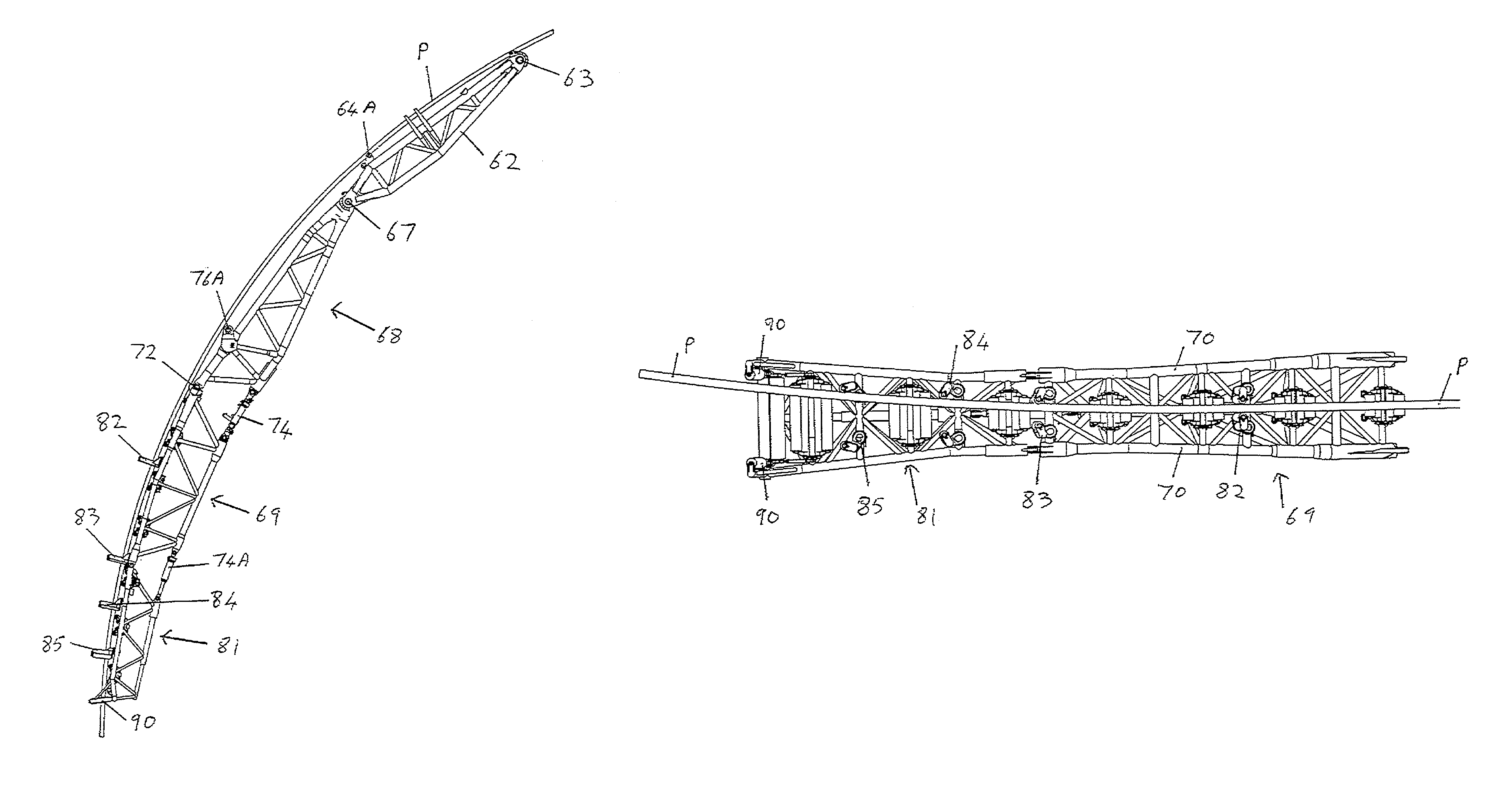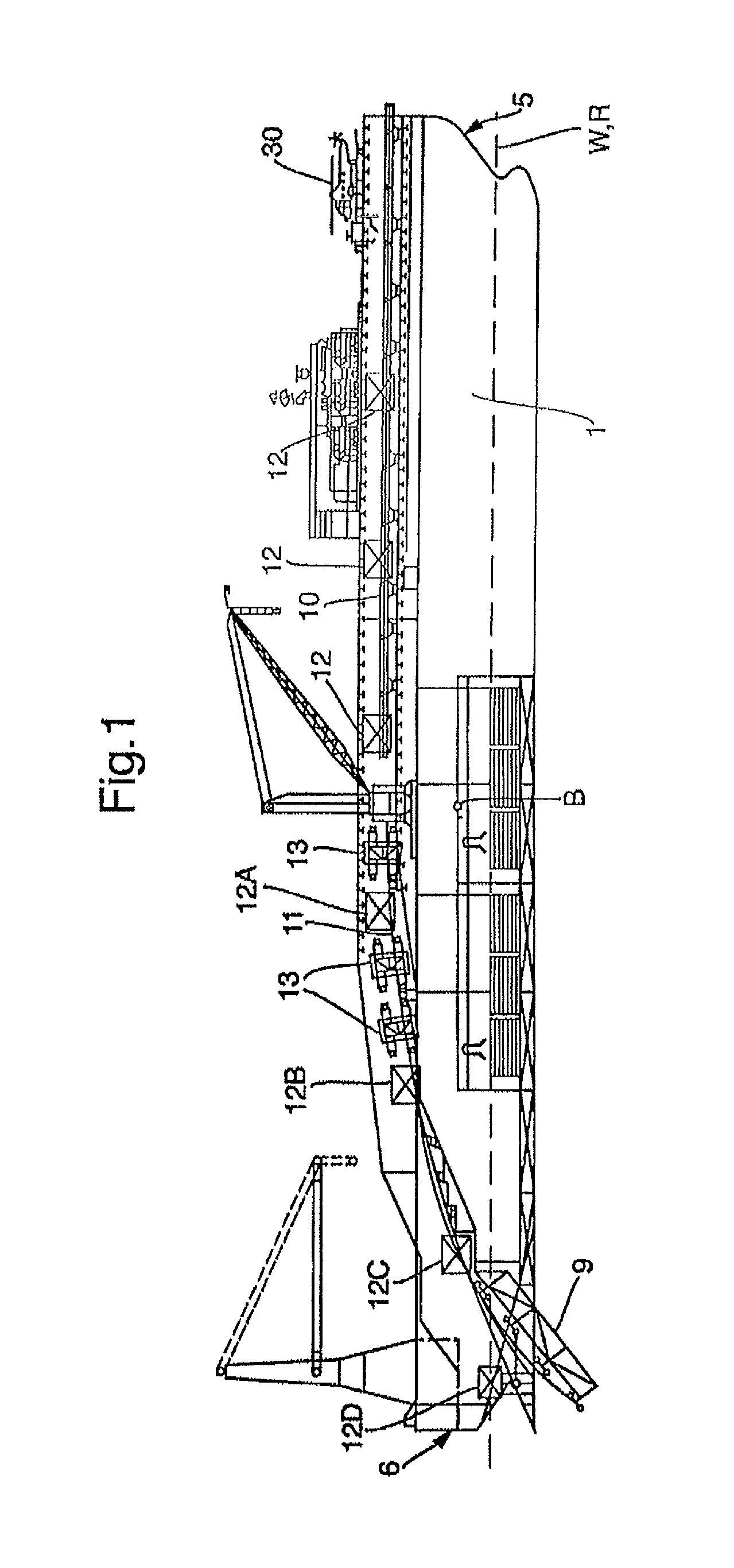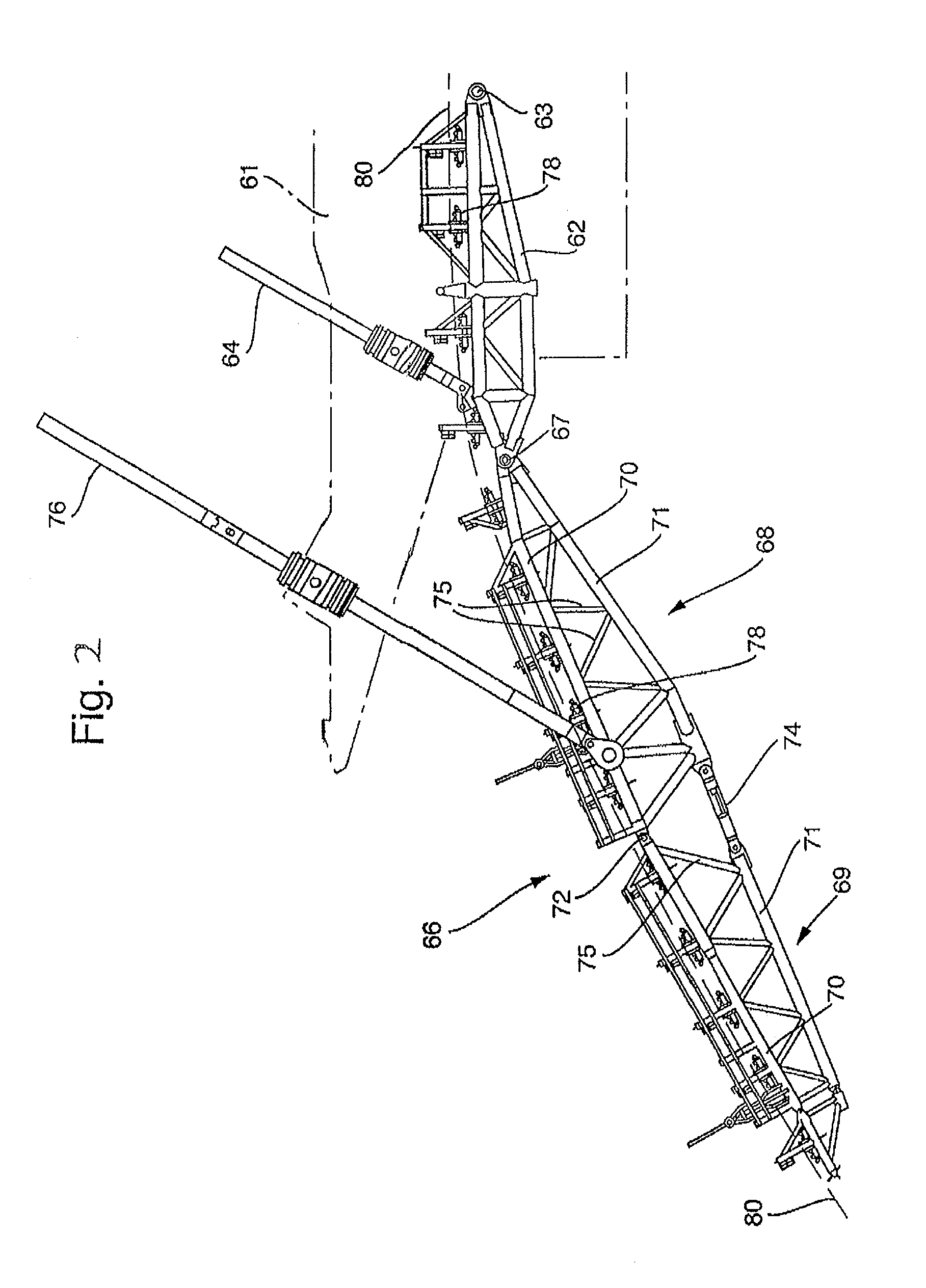Method and vessel for laying a pipeline
a pipeline and stinger technology, applied in the direction of pipe laying vessels, pipe laying and repair, mechanical equipment, etc., can solve the problems of increasing the difficulty of weathervaning, increasing the difficulty of laying, and the path followed by the pipeline from the downstream end of the stinger to the point at which the pipeline touches down on the seabed inevitably changes substantially, so as to achieve the effect of simple construction and robustness and economic benefits
- Summary
- Abstract
- Description
- Claims
- Application Information
AI Technical Summary
Benefits of technology
Problems solved by technology
Method used
Image
Examples
Embodiment Construction
[0049]FIG. 1 is the same drawing as shown in WO 2008 / 107186 and reference can be had to that publication for further details of that vessel. Since, however, embodiments of the invention described below comprise modifications of the vessel shown in the drawings of WO 2008 / 107186 it is convenient to describe briefly the vessel shown in that publication the contents of which are incorporated herein by reference.
[0050]The vessel generally comprises a vessel hull 1, within which are defined a plurality of prefabricated decks for the prefabrication of jointed pipe sections from individual lengths of pipe and on which cranes and other facilities are provided. The bow 5 of the hull 1 is shown on the right hand side and the stern 6 of the hull 1 is shown on the left hand side, as viewed in FIG. 1.
[0051]The vessel hull 1 is of unconventional design at its stern end, having starboard and port end portions between which an elongate recess is defined. The recess is open at the stern end of the h...
PUM
 Login to View More
Login to View More Abstract
Description
Claims
Application Information
 Login to View More
Login to View More - R&D
- Intellectual Property
- Life Sciences
- Materials
- Tech Scout
- Unparalleled Data Quality
- Higher Quality Content
- 60% Fewer Hallucinations
Browse by: Latest US Patents, China's latest patents, Technical Efficacy Thesaurus, Application Domain, Technology Topic, Popular Technical Reports.
© 2025 PatSnap. All rights reserved.Legal|Privacy policy|Modern Slavery Act Transparency Statement|Sitemap|About US| Contact US: help@patsnap.com



